How To Draw Solids On A Flat Surface?
Drawing solids on a flat surface
When we draw a solid shape, the images are somewhat distorted to make them appear three-dimensional as our drawing surface is paper which is flat. It is a visual illusion. There are two methods to draw 3-D figures :
- Oblique Sketches
- Isometric Sketches.
What is an oblique sketch?
Oblique Sketches
If we look at figure, just by look we can say that it is a figure of cube although its all edges are not equal. This type of sketch by which we just get the idea of the given solid is called the oblique sketch.
 Let us learn the technique for drawing a cube.
Let us learn the technique for drawing a cube.
 Similarly, we can draw a cuboid on squared graph sheet:
Similarly, we can draw a cuboid on squared graph sheet:

What is the meaning of isometric drawing?
Isometric Sketches
An isometric sheet is a special sheet on which dots are formed on a pattern of equilateral triangle. On isometric sheet we can draw sketches in which measurements also agree with those of a given solid.
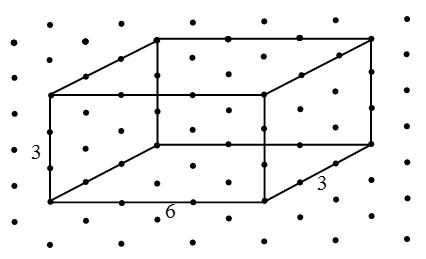 The lines on the paper are in the three directions, each of which represents a dimensions. The lines up and down represent the vertical dimension (height). The other two dimensions represent the horizontal dimensions (length and breadth). Therefore to draw a 3-D figure, we use a isometric graph sheet or isometric dot paper.
The lines on the paper are in the three directions, each of which represents a dimensions. The lines up and down represent the vertical dimension (height). The other two dimensions represent the horizontal dimensions (length and breadth). Therefore to draw a 3-D figure, we use a isometric graph sheet or isometric dot paper.
A dot sheet, on which dots are marked at equal distances is also used to draw a 3-D figure. Such a sheet is called isometric dot sheet.
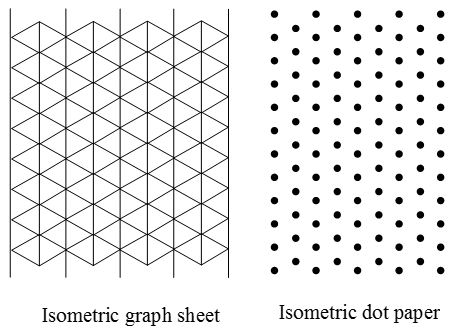 A sample of each one is given below:
A sample of each one is given below:
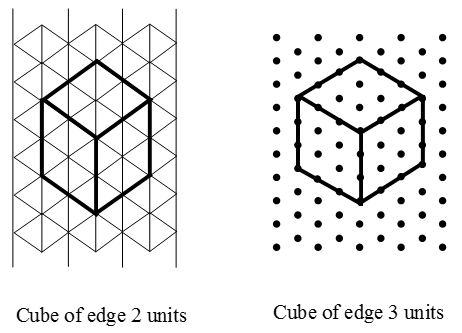 Let us draw cubes and cuboids using isometric dot paper or isometric graph sheet:
Let us draw cubes and cuboids using isometric dot paper or isometric graph sheet:
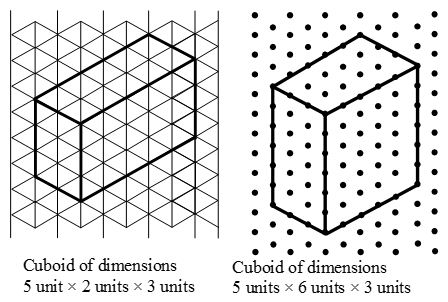 We can make other shapes also by using isometric sheets.
We can make other shapes also by using isometric sheets.
Example: In following figures find the length, breadth and height of shapes.
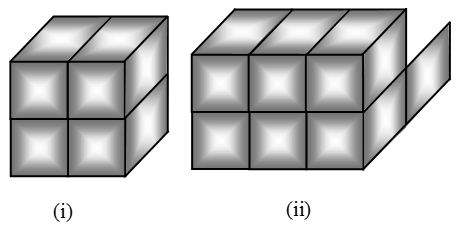 Solution:
Solution:
Clearly in fig.(i) length = 2 units, breadth = 1 unit,
height = 2 units.
In fig.(ii) length = 3 units, breadth = 2 units
height is varying, from front it is 2 units and in back it is 1 unit.